It hardly seems possible but I only accepted my Tele Rolleiflex into my life a smidge over one year ago. It feels like much longer. My story is perhaps typical, a digital shooter who became exasperated with the super clean, over processed images I was seeing on Flickr where I posted my own super clean, over processed images. With time I became more interested in the rougher edges of film and I finally took the plunge in the summer of 2021 purchasing a beautiful Leica R6.2, a fully mechanical red dot 35mm SLR that came with the sharp-as-a-tack Summicron-R 50mm lens. Oh how I loved that camera. From the first press of the shutter I was forever hooked on film. Since that first Leica I have bought, used, and sold countless film cameras, too many to even think about. From clunky Zenits and Prakticas to beautifully made Pentax Spotmatics and ME Supers, from Russian made rangefinders to Yashica TLRs and there were many more. And don’t get me started on the Olympus OMs, so beautiful, so elegant, so practical. I used them all. I loved them all. But inevitably once I’d shot a few rolls in them I’d move them on. Sometimes I made a few quid on a sale, sometimes I’d lose a few quid but to this day I still research, buy, shoot, and then sell cameras and lenses. Nothing makes me happier.
It was perhaps inevitable that Rolleiflex TLR cameras would eventually cross my threshold, especially after shooting a Yashica C for 6 months or so. I loved the crazy experience of shooting with a waist level finder, everything backwards and so confusing at first. Left is right and right is left, it can make your mind spin and drive you nuts in the process. But when the scans came back those huge (compared to 35mm) negatives were a thing of beauty.
So the research began. What were the best Rollei TLRs out there? I learned about all the nuances of serial numbers (oh so important to the Rollei community), the desirability of the 2.8F models, the arguments as to whether the Planars were better than the Xenotars (they’re not), the discussions on whether to swap the old finder glass with new brighter glass etc. I lapped it all up and started to look for my first Rollei TLR. And so it was that I came across an auction house in Wales that had a specialty camera auction on and in it were 10 or 12 Rollei TLRs of all descriptions. Again I did the research, decided I wanted the newer E and F models and put bids in on 3 different cameras hoping to get one at a decent price. Well, on the evening of the auction I watched online as my opening bids won all 3 lots with no other bidders coming in! Suddenly I went from owning no Rollei TLRs to owning 3 of them. I expected them to have problems and they didn’t disappoint. All of them needed work and I sent them off to be repaired and CLA’d. That was in July 2023 and by September I had all of them in beautiful working condition again.
I will not wax lyrical about how they handle and shoot, suffice to say that once you get comfortable with shooting a Rollei TLR it is an experience you will always look forward to. So on to the Tele Rolleiflex that this article is about. After selling one of those initial 3 Rolleis I started to again watch the auction houses around the UK for Rollei cameras. In December I spotted an auction with 5 or 6 Rollei TLRs and there was one 2.8F which was singing my name. I set myself a budget and registered for the auction. On auction day I logged on and waited for the 2.8F to come under the hammer. Well I guess I can say that the word is well and truly out on the 2.8Fs and the one I was after went for £900 (before auctioneer’s fees), about £400 more than I’d budgeted for. I was deflated at just how badly I’d misjudged the market.
Still watching the auction I watched as other cameras came under the hammer. I could see that a Tele Rolleiflex was coming up, a camera I’d hadn’t even considered beforehand. I did a quick search on fleaBay and was astonished to see Tele Rolleis going for north of a £1000 with regularity. A quick look at the listing pictures showed a camera in very good cosmetic condition with a smart leather case. It wasn’t long before it came up for auction and the bidding started then immediately slowed at a price that I thought was a steal so I ventured forth and hit the bid button, not for a moment thinking I’d actually be successful. But I was. This somewhat baffled me because the highly sought after 2.8F had gone stratospheric while the highly sought after Tele Rolleiflex had sold for a song. Something didn’t feel right.
A week later the camera arrived and I had my first chance to examine it closely. The shutter worked, the film transport and cocking mechanism seemed fine, the meter even worked. There was an issue with the slower shutter speeds (under 1/30th second) which I had expected as that is extremely common for Rolleis and mechanical cameras in general. But the faster speeds seemed fine. I then popped the lens caps off the viewing and taking lenses and all became clear. Or more accurately, all became unclear. Now I knew why I’d got this camera so cheaply – it suffered from the dreaded balsam separation in the taking lens. Apparently this is not uncommon in the 135mm Sonnar lenses that the Tele employs. Worse, it’s a problem that is nearly impossible to fix. No wonder the bidders had shied away from it at the auction. I went back and viewed the auction pictures again and I immediately saw that what I had presumed to be semi-circular lights reflecting around the edges of the lens was in fact separation. As Homer Simpson so succinctly put it… Doh!
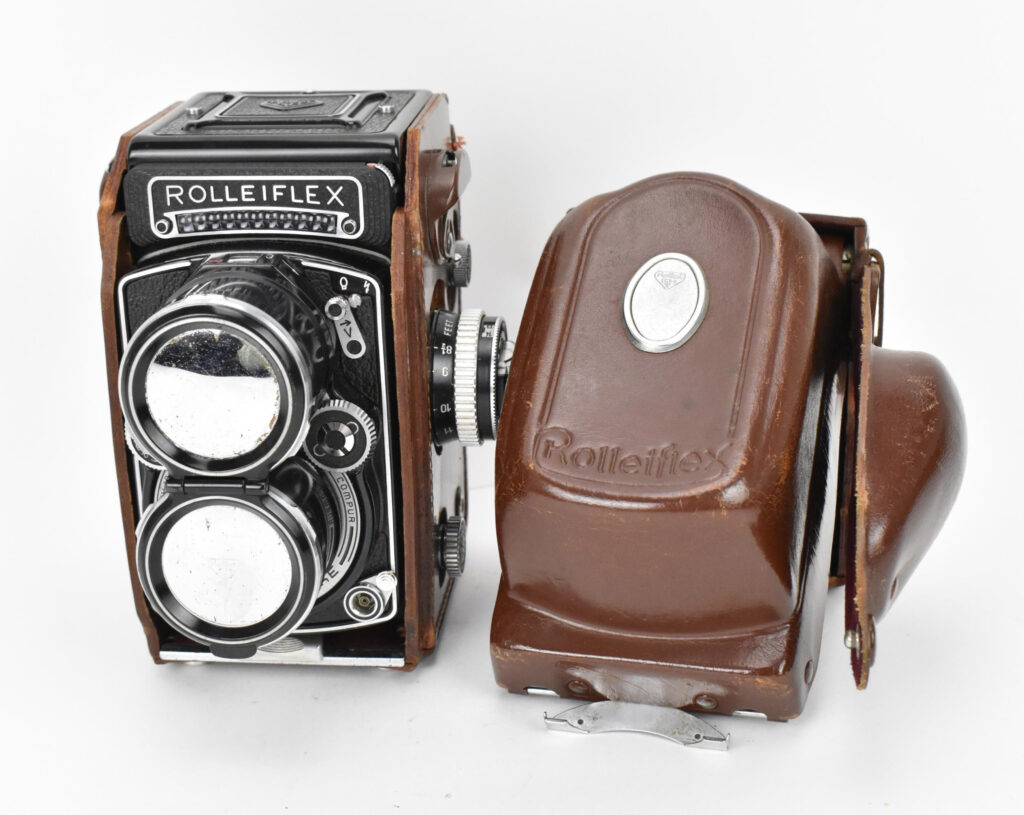
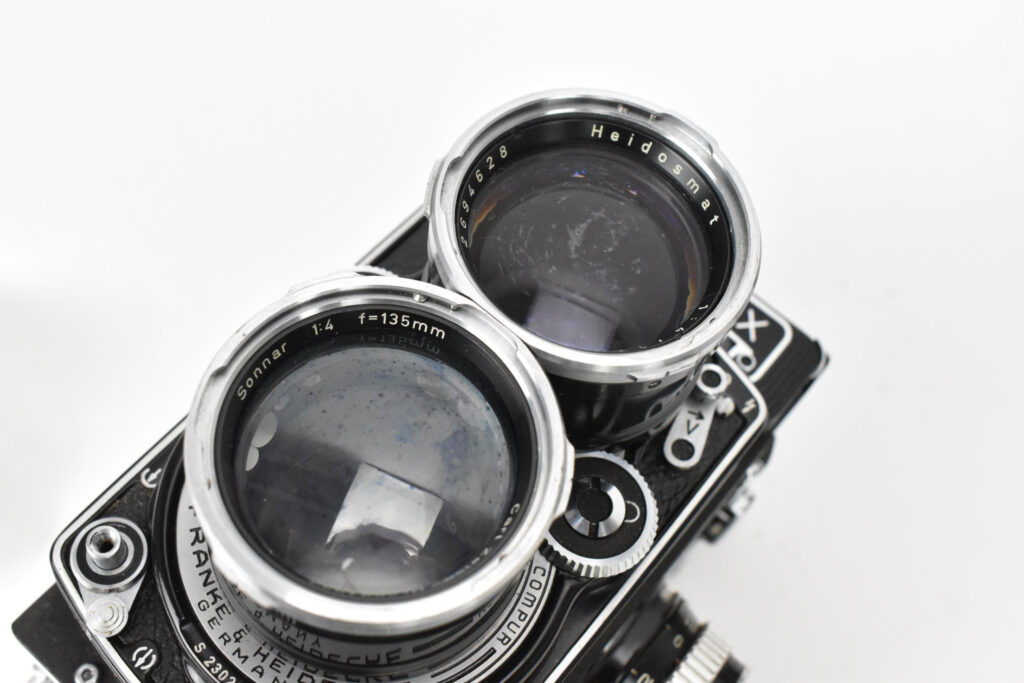
Now I had a problem. While the price I’d paid for the Tele Rolleiflex was a steal for a fully working camera in good condition unfortunately my copy no longer fell into that category. If I were to try to sell it I would of course have to declare the separation issue and the punters would flock to the other side of the internet to steer clear of my poor Tele. The way I saw it I had two options. Put it up for sale at auction with a low starting price and hope I received a few bids to sell it at a price where I could recoup a portion of what I’d paid for it, or I could keep it and use it myself. That may sound crazy but I’d done a lot of research on the balsam separation problem and the majority (not all) of owners who had the same problem said that it hardly effected image quality. I reckoned I’d try it out and see how it performed. But those pesky slower shutter speeds still needed to be dealt with and after much deliberation I decided to send it off to my repair guy and get the problem sorted. Good money after bad? Perhaps but I put my trust in those owners that said they got good results with their copies, in spite of the separation. And so perhaps with a little too much optimism I arranged to have the Tele CLA’d. After all I’d read all this on the internet so it must be true… right?
My first roll of film through the Tele Rolleiflex did nothing to bolster my confidence in it but that was mostly my fault. I went out on a very dull winter’s day in mid January and shot some landscapes with 100 ISO black and white film. The results were pretty awful, grainy and dark, and even Photoshop threw up its hands and told me to go elsewhere with my scans when I tried to make something of them in post processing. The good news though was that there was only one shot that had some hazing on it, which may or may not have been due to the separation problem.
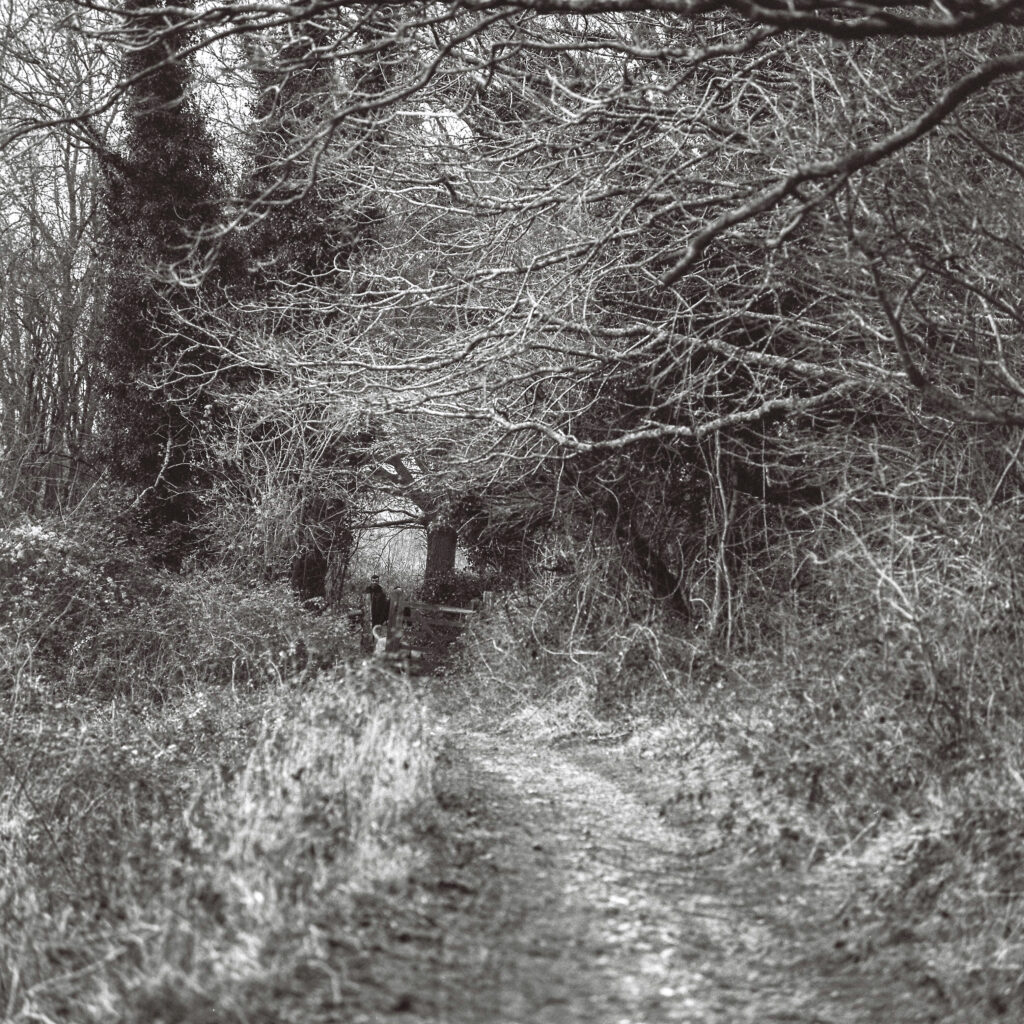
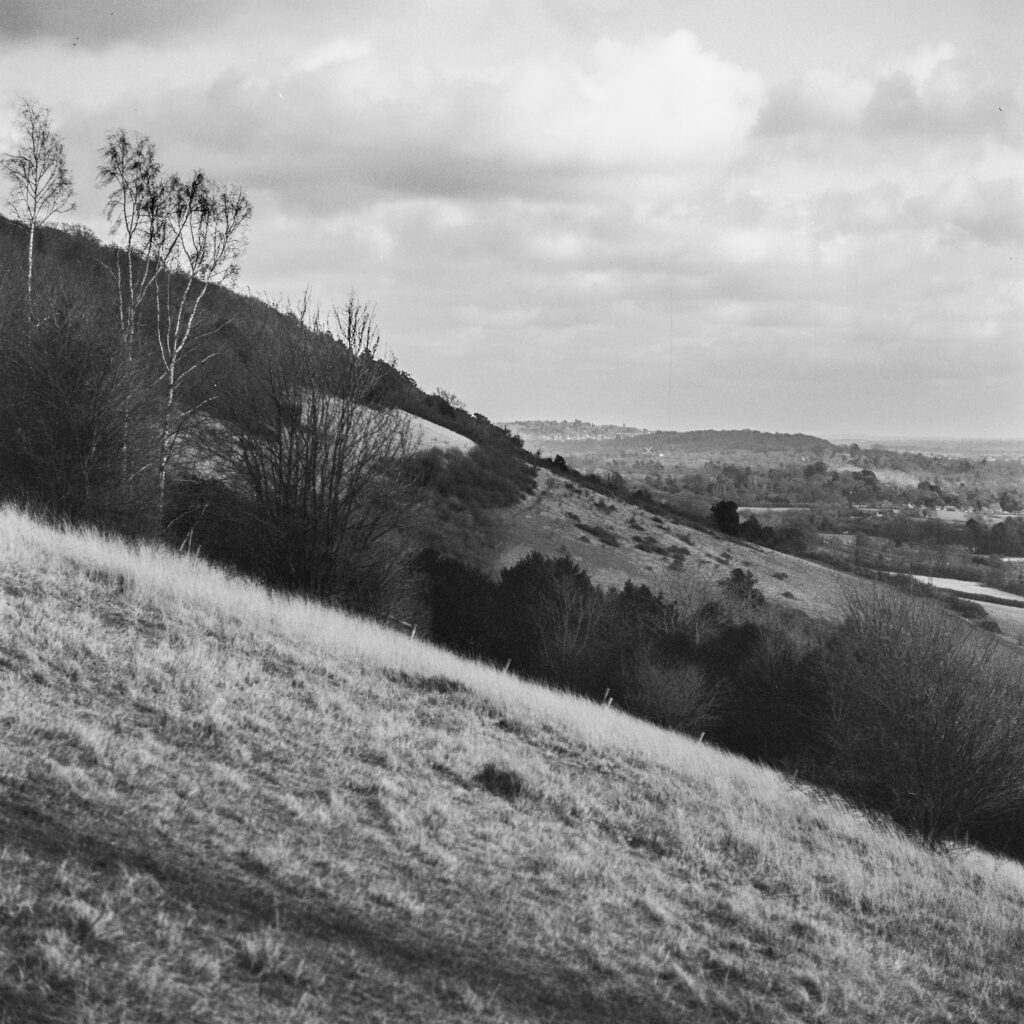
Undaunted, I took it out again a few weeks later on a bright sunny day and spent a happy afternoon walking alongside the Thames in east London with the Tele in hand. I shot a roll of Kodak Gold 200 through it, then a roll of Ektar 100, and finally a roll of Potsdam 100 B&W – 36 frames in all. And how many were affected by the balsam separation? Well, on the first roll, the Gold 200, there were 3 shots that I could be sure of, but the other 33 shots that day were absolutely fine. And the Tele? Well it handled like a dream, a rather heavy dream but hey, it’s no lightweight and I already knew that when I set out that morning.
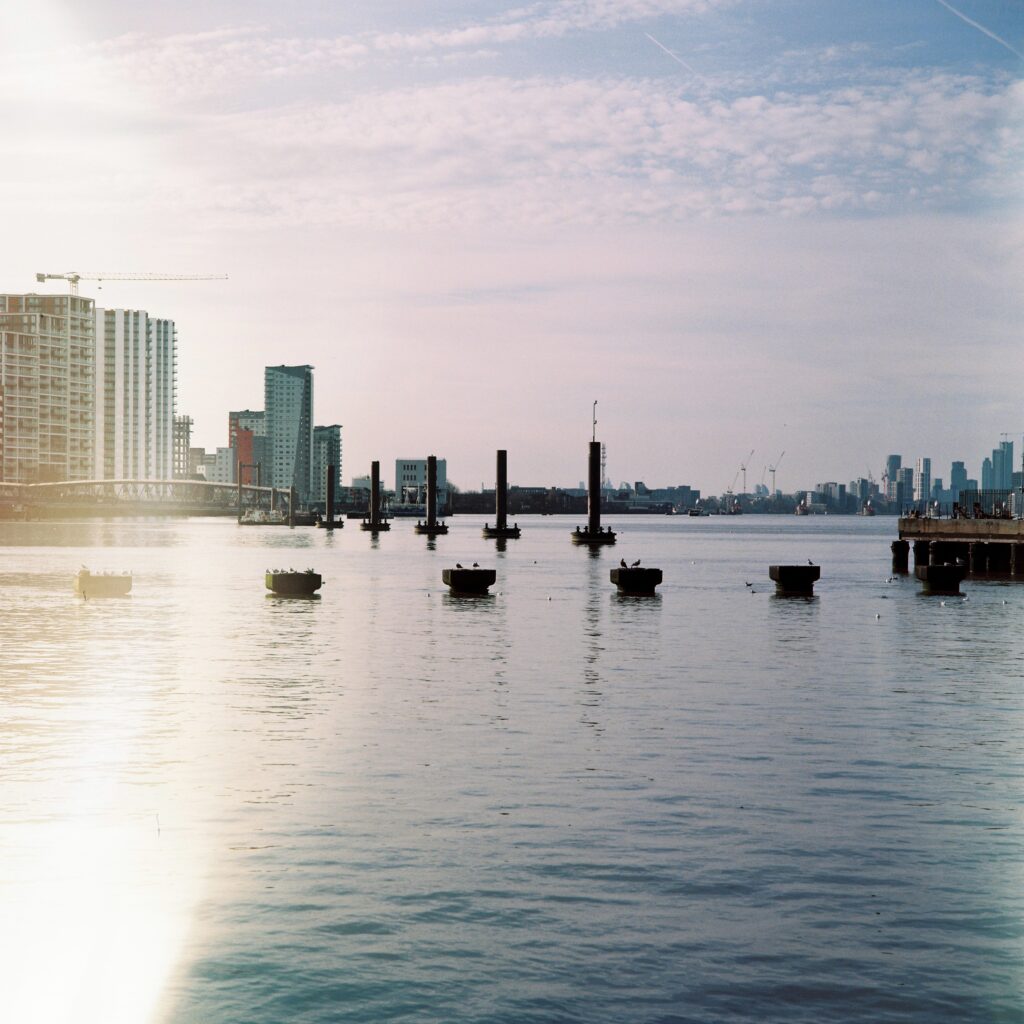
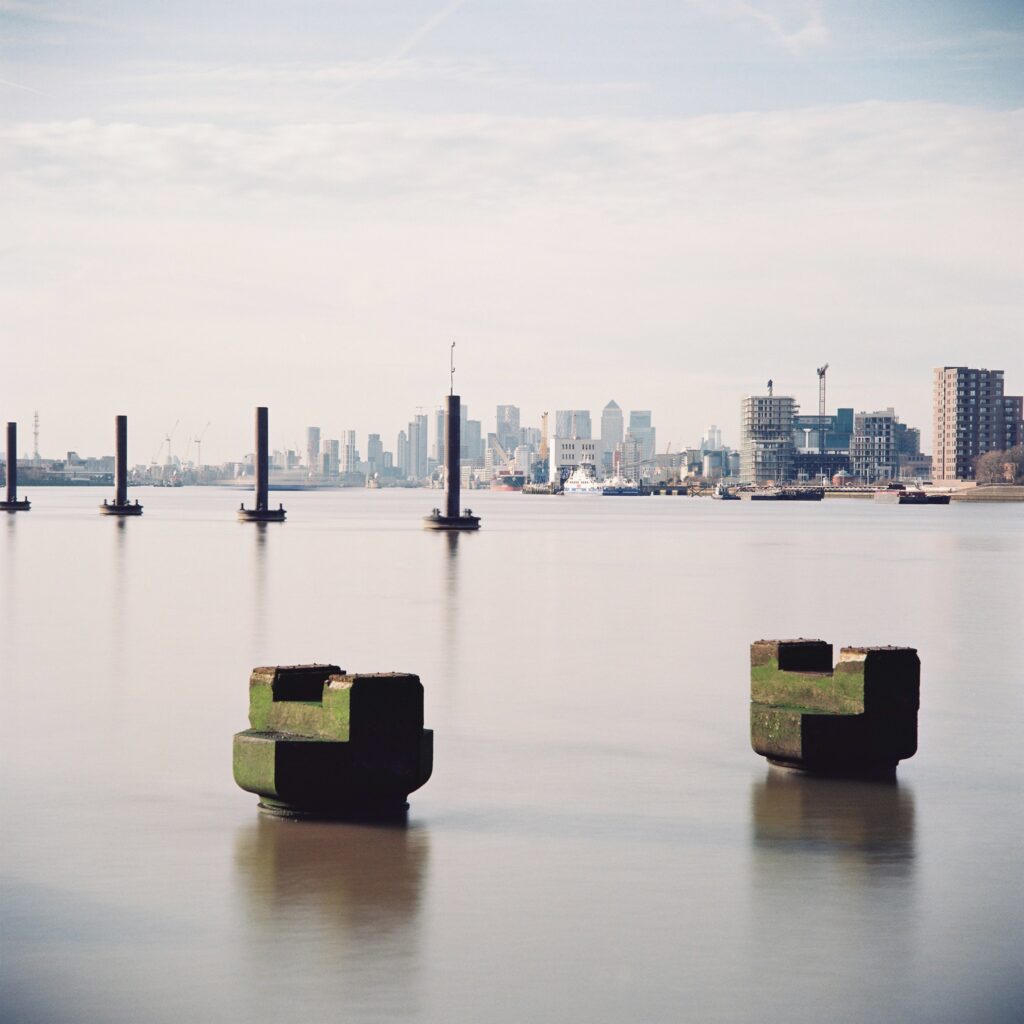
So what about the Tele Rolleiflex and the way it handles and shoots and more importantly, why does it even exist? Apparently sometime in the mid 50s when TLRs were very much at the top of the tree for professional photographers Rolleiflex had received a challenge by way of the Japanese camera maker Mamiya. Mamiya had the professional C series of TLRs and they came out with interchangeable lenses. This must have shocked the designers at Rolleiflex when they realised that they would have to respond or risk losing a lot of loyal Rollei shooters who were clamouring for more focal length flexibility. Rollei’s answer was not to design a TLR with interchangeable lenses but to design two entirely new cameras, one with a longer than normal 135mm Sonnar 1:4 lens – the Tele, and one with a much wider than normal 55mm Distagon 1:4 lens – the Wide. To me it seems a lot to ask of your customers who would need to buy a whole new camera simply because they wanted to shoot either longer than the standard 75/80mm Rollei focal length or wider. And to add insult to injury for Rollei shooters the Tele has a rather ridiculous minimum focussing distance (MFD) of 2.7 meters (yes I did say meters) so it couldn’t even do the one thing that many people probably thought it was designed for, that being portraiture. Rollei’s answer to the long MFD problem was to produce an expensive add-on Rolleinar accessory, specific to the Tele Rollei, which would act as a kind of magnifying lens to shoot close ups. Oh my, what were they thinking!
The Tele and the Wide were produced in relatively small numbers. According to serial number information only about 4000 Wides were ever produced and approximately 8500 Teles. The Wides are very collectable and sell for silly money. The more abundant Tele Rolleis are less expensive but in good condition are still equivalent in value to a fully functioning 2.8F. Unless of course you have one with balsam separation!
The Tele Rolleiflex came in two versions – 1 and 2. Mine is a version 1 and it has an uncoupled selenium EVS meter that while still able to meter accurately is rather clunky in the way it works for those of us used to using phone apps to meter for our vintage cameras. EVS stands for ‘Exposure Value System’ and after setting the ISO on the camera body you are then required to get an exposure value using the meter, not particularly difficult to do. You simply twiddle with the meter dial until the two needles line up. This will give you an exposure value (EV), typically between 4 (very low light) and 18 (extremely bright light).
You’ve then got to take that EV and dial it into your shutter speed dial which has an EV scale on it to allow you to do that. So for example if you’ve set the ISO on the camera to 100 ASA and the meter is telling you that your EV is 15 you would set the EV scale on the shutter speed dial to point to 15. However to get the arrow to line up at EV 15 you will most likely have to also adjust the aperture dial at the same time. This sounds more complicated than it really is but there’s no denying it all takes time. Once dialled in correctly EV 15 equates to an exposure of 1/125 at f/16. But EV 15 will also be true for 1/250 at f/11, or 1/500 at f/8 etc. In fact once you’ve dialled the EV in it’s up to you to decide which one of those combinations you choose in order to determine your depth of field for the shot. It’s a rather fiddly way to get correct exposure but once you get used to it it is actually quite intuitive and takes less time than you think. I didn’t think I would use the meter on the camera much but I took the Tele out again a few weeks ago and only used the on board meter and enjoyed the experience. To top it off not one shot from the two rolls I shot was incorrectly exposed.
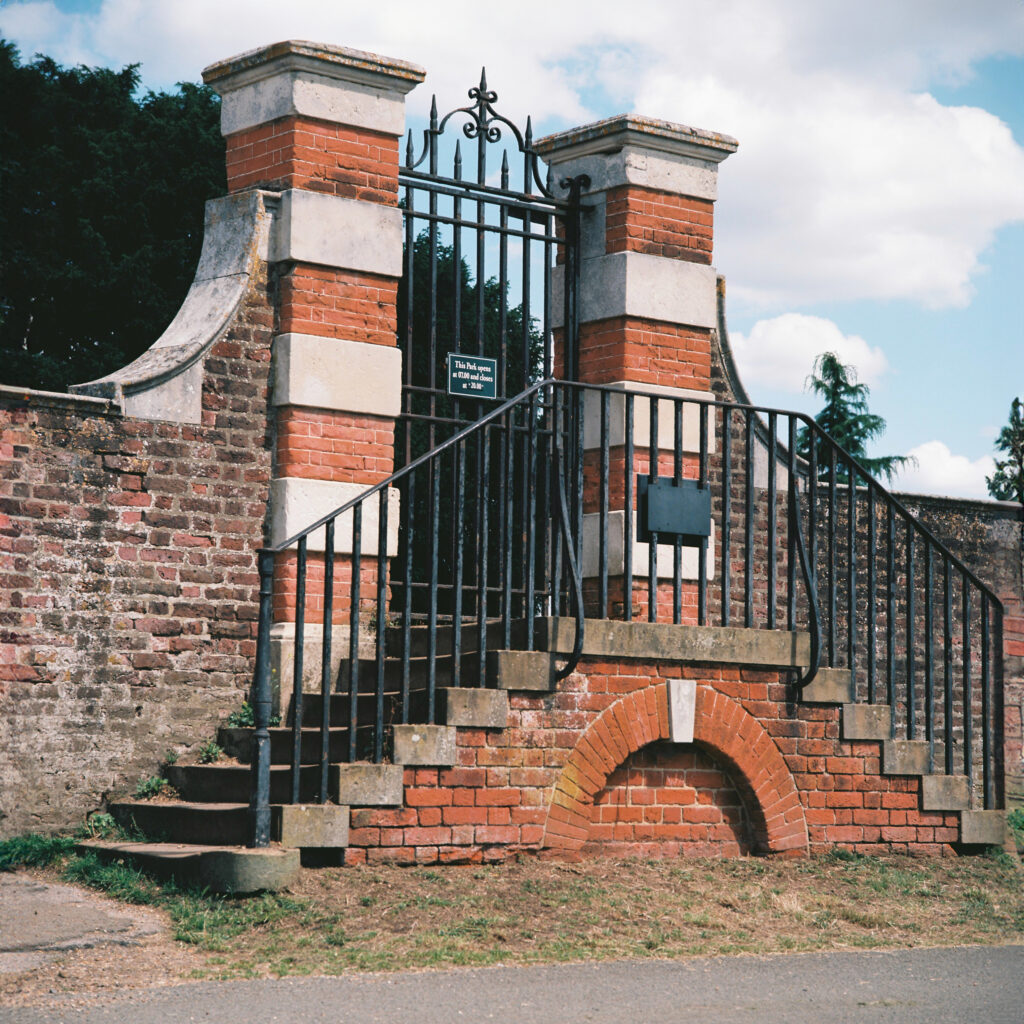

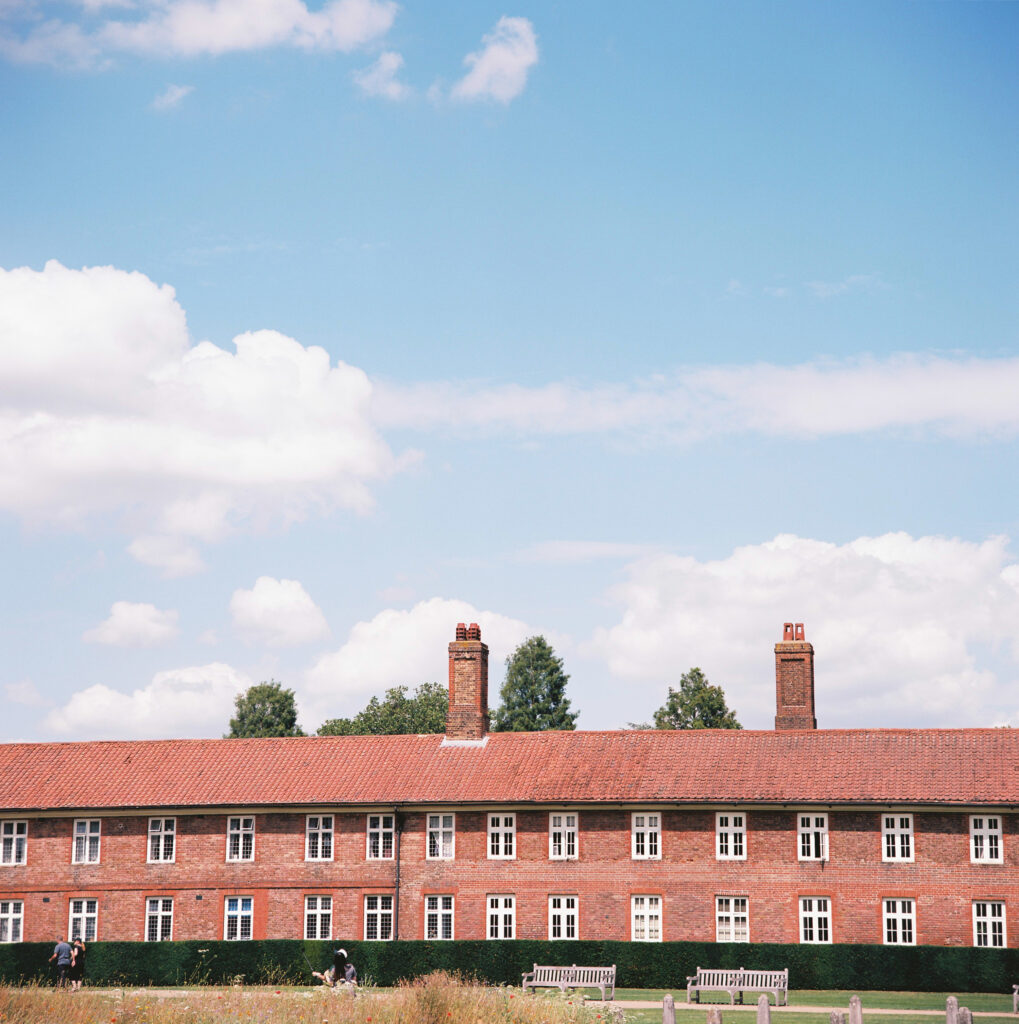
Is the Tele Rolleiflex a camera for everyone? Certainly not. As mentioned above it’s substantially heavier than both the 3.5 and 2.8 models and the protruding lenses make it more awkward to carry. In general I shoot it on a tripod as it’s not a camera that is easy to shoot quickly so shooting it on a tripod actually suits the camera. As I already own a 2.8E and a couple of 3.5Fs you might ask why I bother. That’s easy to answer. The longer 135mm focal length (approximately 74mm in equivalent full frame focal length) is substantially longer than what I see in my other ‘normal’ Rolleis. The 135 does get you much tighter into the scene. But the real reason I continue to shoot with it is the quality of that fabulous Sonnar lens. Balsam separation or not, its still a wonderful lens and I simply love the way it renders.
I’ve recently shot a few more rolls of colour film through the Tele and I’m relieved to say that not one shot showed any signs of the balsam separation. I know that there will be shots that I take with the camera in the future that will be ruined by the separation issue but for me, at least for now, the pros outweigh the cons for this venerable, slightly odd, old TLR. I wouldn’t say to anyone that they should go out and buy one as they require more diligence that a lot of people are comfortable with but if you ever get the chance to shoot with one my advice would be to not pass it up. It’s a fun experience and the quality of the images it produces might surprise you!
Thanks for reading. You can find more of my work, both digital and analogue, on Flickr.
Film is not dead.
Share this post:
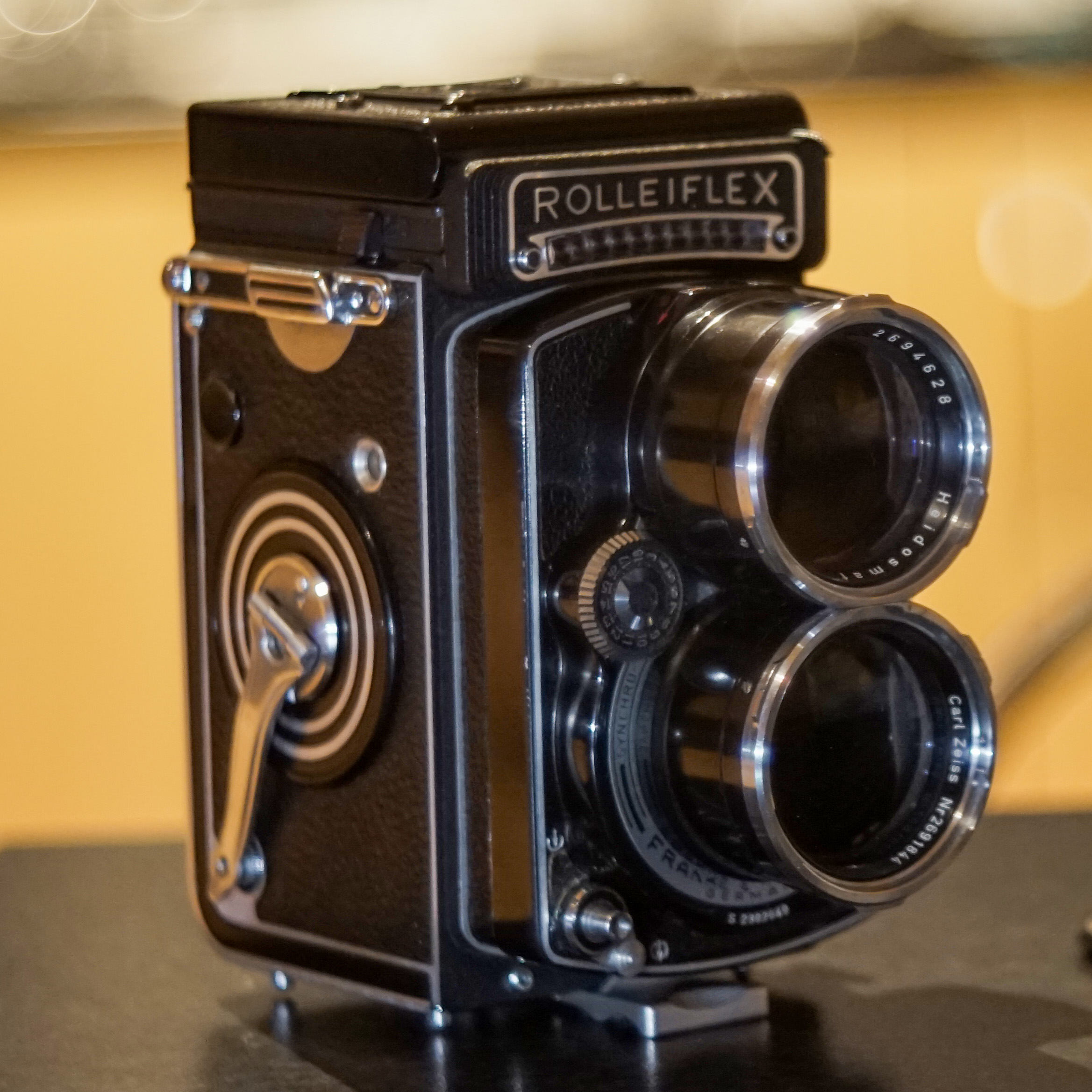
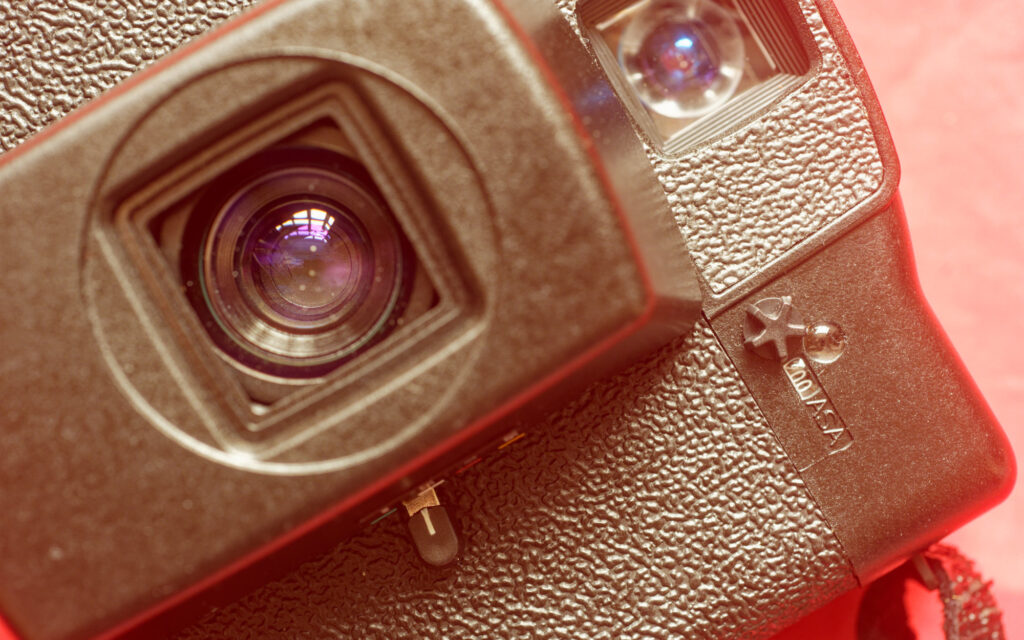
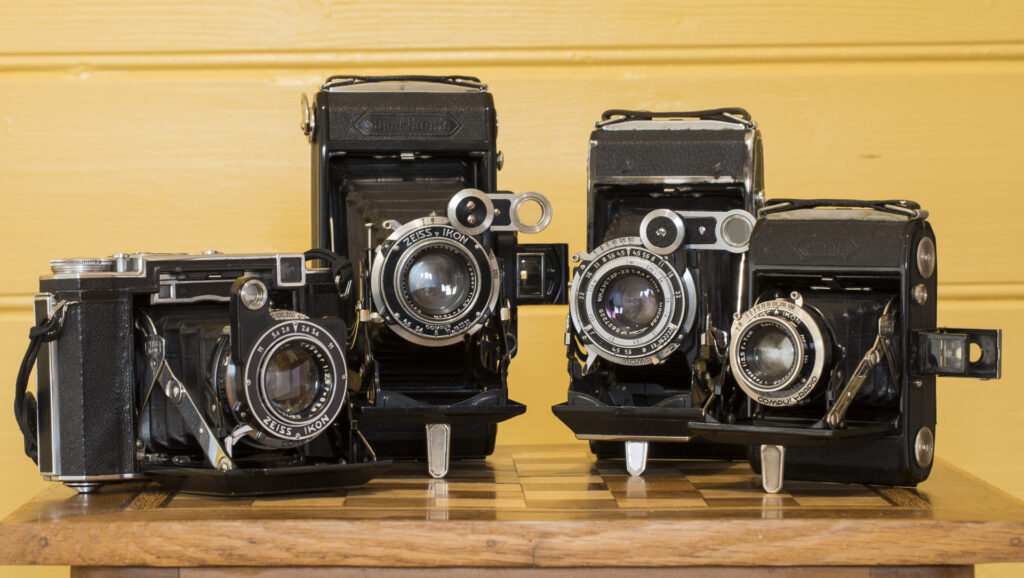
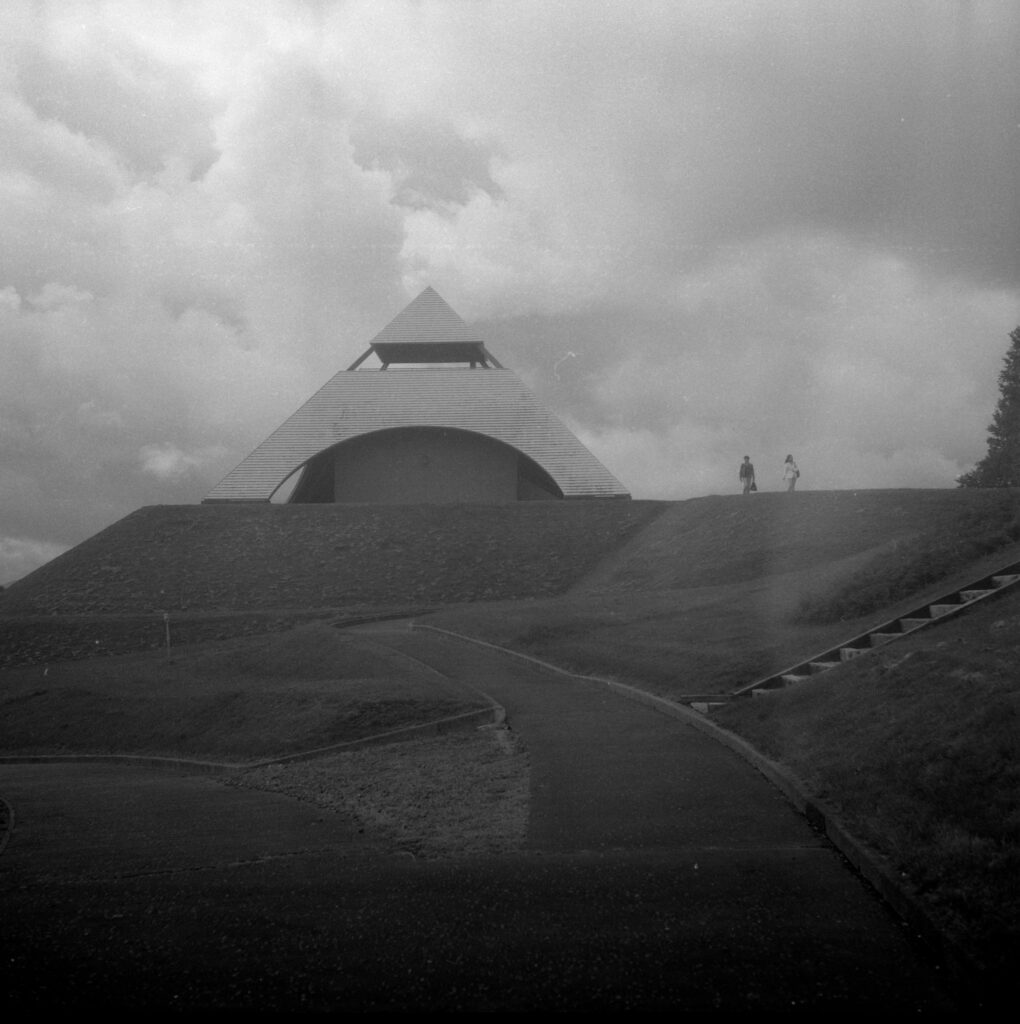
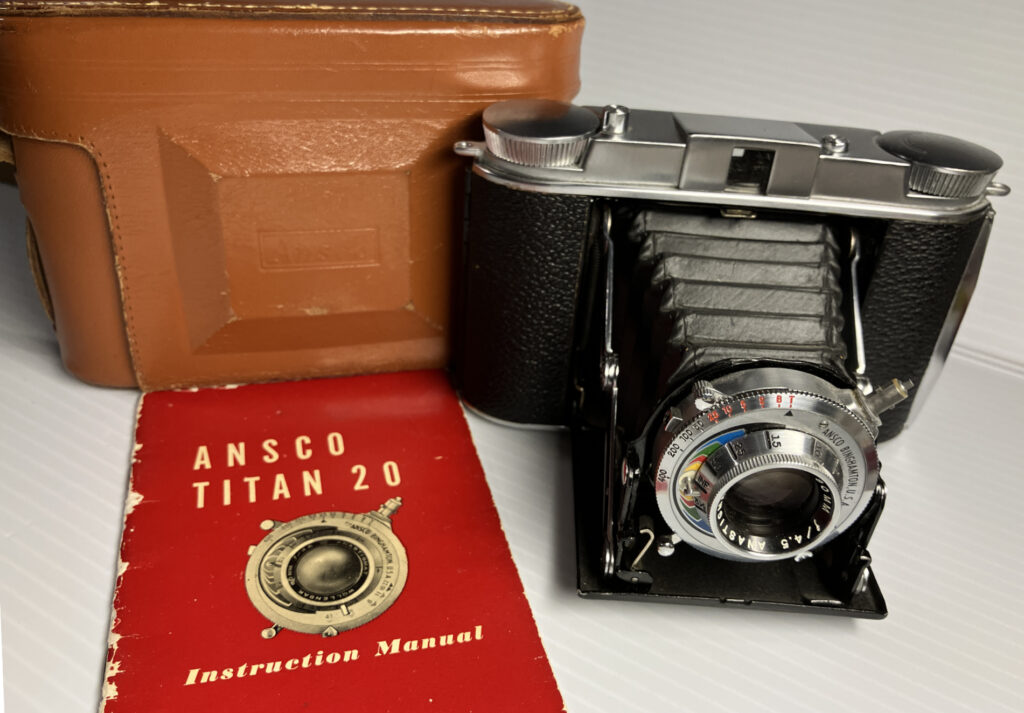




Comments
Timothy Hancock on Tele Rolleiflex Review – I will not be separated from this camera
Comment posted: 28/10/2024
Comment posted: 28/10/2024
Bob Janes on Tele Rolleiflex Review – I will not be separated from this camera
Comment posted: 28/10/2024
Did Rollei also produce some 'mutars' for the TLRs?
Comment posted: 28/10/2024
Comment posted: 28/10/2024
John Earnshaw on Tele Rolleiflex Review – I will not be separated from this camera
Comment posted: 28/10/2024
Comment posted: 28/10/2024
Matthias Steck on Tele Rolleiflex Review – I will not be separated from this camera
Comment posted: 28/10/2024
I never needed their services but they have a good reputation. I'm quite shure, they did repair some Zeiss/Contax 100-300mm lenses, which are known for separation issues. Perhaps they can also repair Rolleiflex Sonnar lenses. Perhaps it's worth asking there.
Comment posted: 28/10/2024
Jeffery Luhn on Tele Rolleiflex Review – I will not be separated from this camera
Comment posted: 28/10/2024
Very nice images! The straight on Hampton Court Palace is my favorite. Stately!!!
Balsam separation and worse yet, fungus, are troublesome. They have more effect on rear elements where the image is already formed. I have a 210 Symar on my 4x5 camera with serious balsam issues, especially on the edges. I never shoot wide open and the results never disappoint. I like my Mamiya c-33 with 105 and 150 lenses. Mamiya worked that out quite well. For casual shooting, my Rolliecord wins!
Comment posted: 28/10/2024
Tony Warren on Tele Rolleiflex Review – I will not be separated from this camera
Comment posted: 28/10/2024
Do you use a lens hood? The problems are definitely cause mostly by flare from the sun in front of the camera, not necessarily in frame though. I suffer flare from my little Minolta 16MG from anything bright in frame, but from fungus I think, but that type of flare may also be a factor in some images.
EV shutters get a bad press but I set mine to roughly where I expect exposures to be at any time when I start out and that mostly makes setting less of a fiddle.
Comment posted: 28/10/2024
John Squillace on Tele Rolleiflex Review – I will not be separated from this camera
Comment posted: 29/10/2024
Comment posted: 29/10/2024
Nick Clark on Tele Rolleiflex Review – I will not be separated from this camera
Comment posted: 30/10/2024
I'm pretty confident saying that that's a light leak and has nothing to do with balsam separation.
I have quite a few lenses in my collection suffering from varying degrees of separation. In almost all conditions it has no perceptible impact on images. Occasionally you will see a faint outline of the separation in bokeh balls, and in aggressively backlit situations you might see a bit of veiling flare and loss of contrast.
Comment posted: 30/10/2024